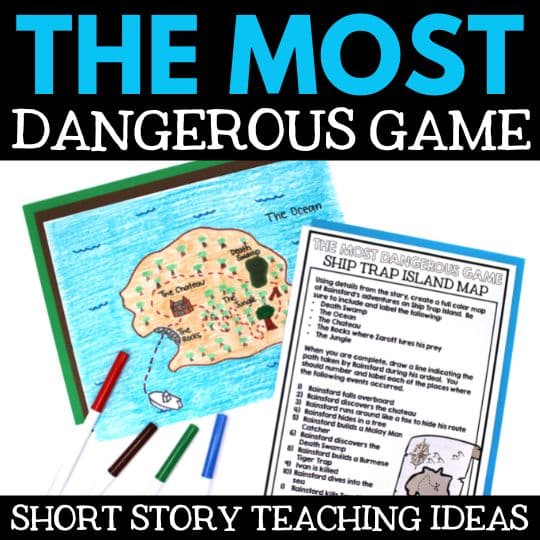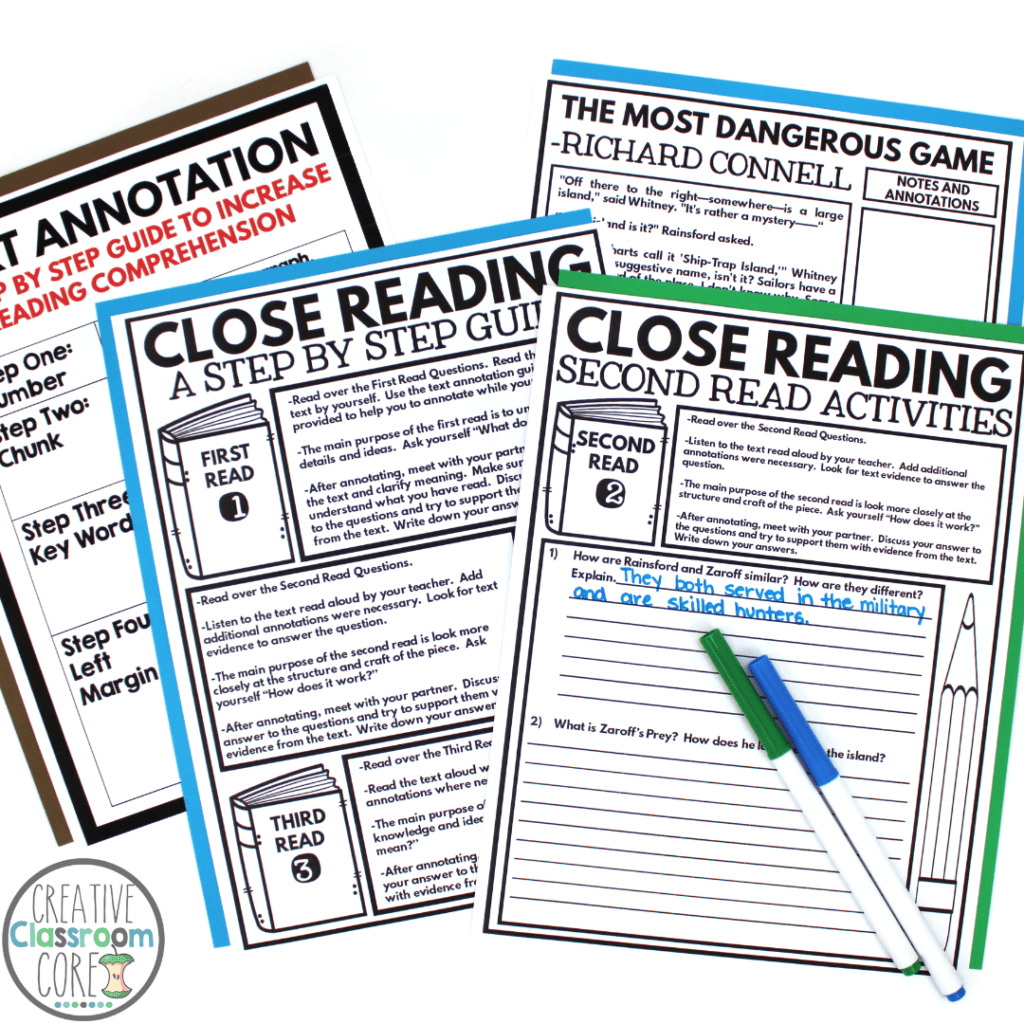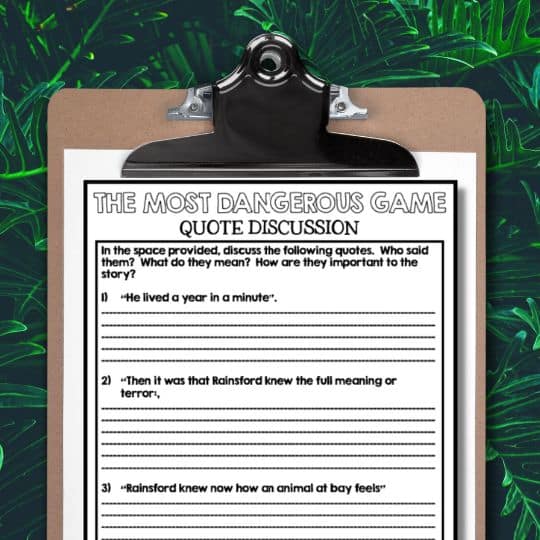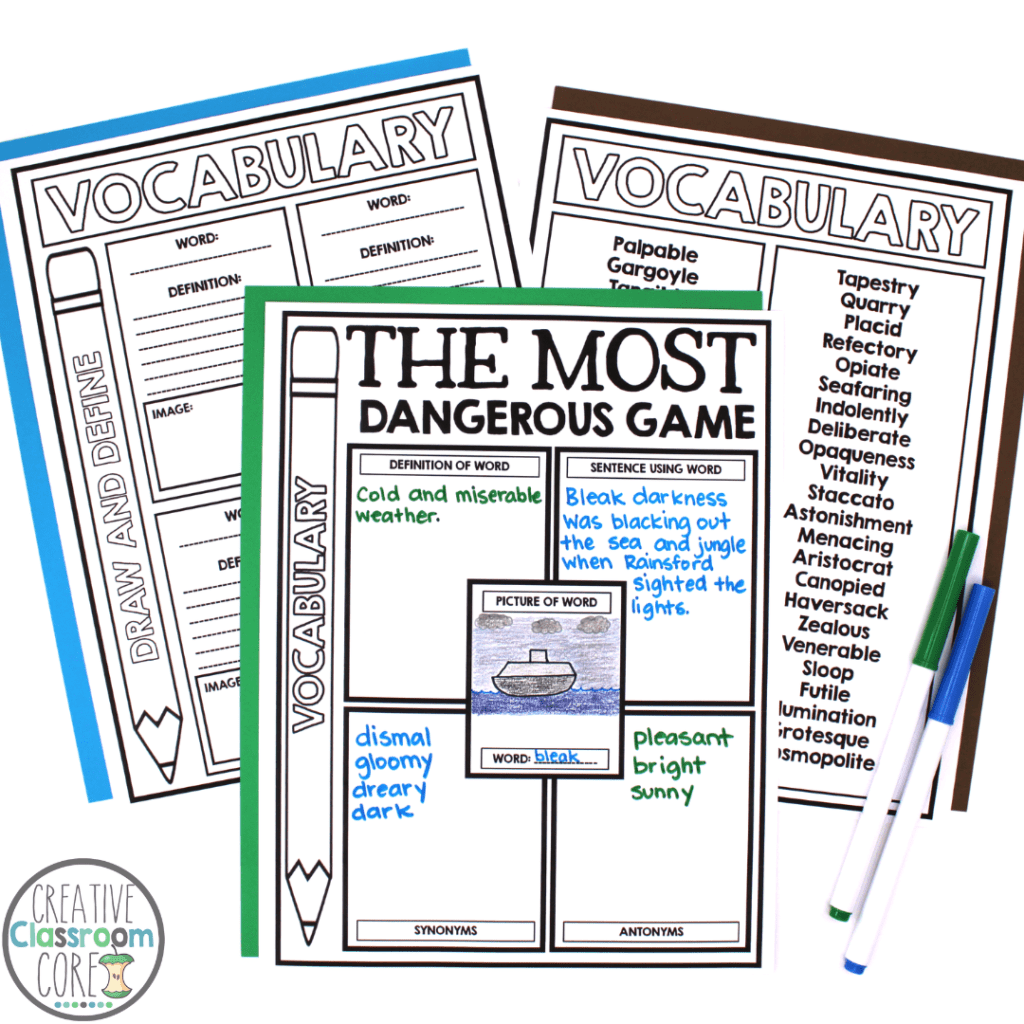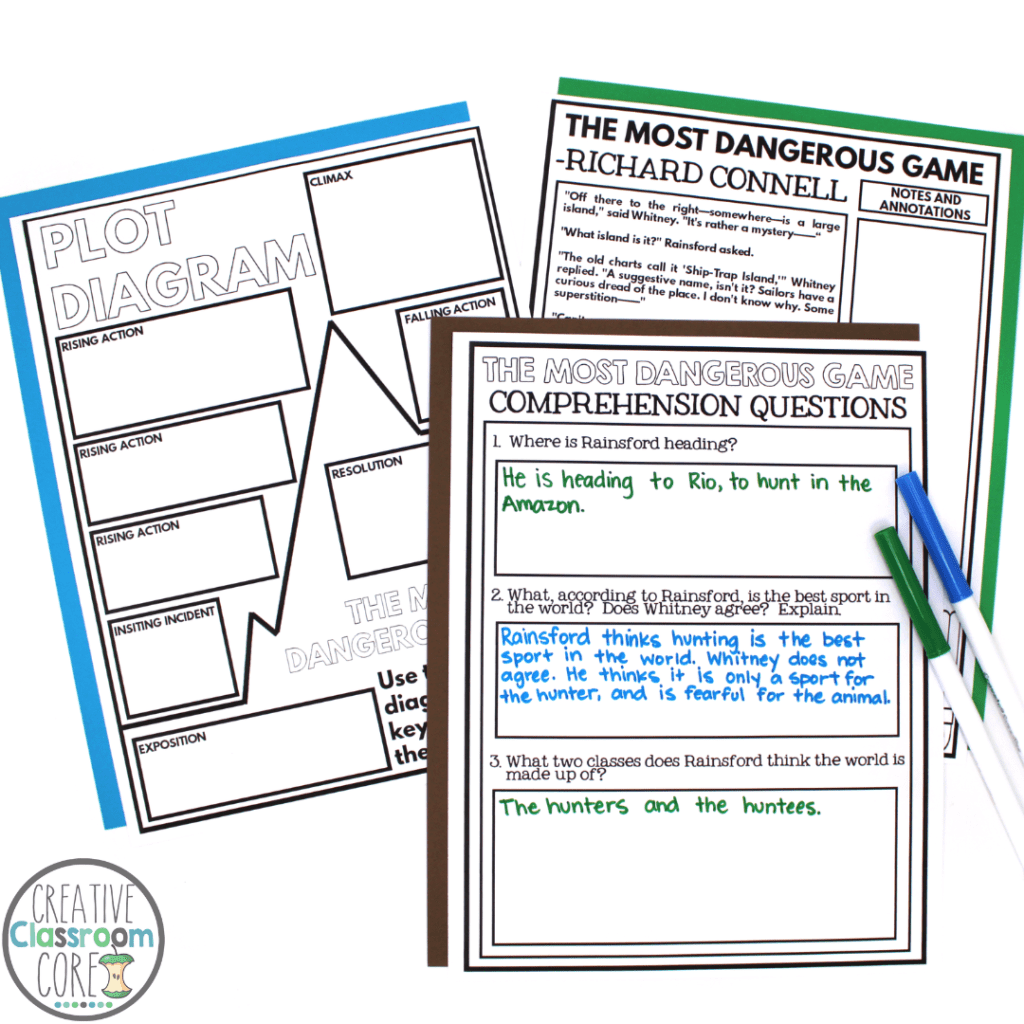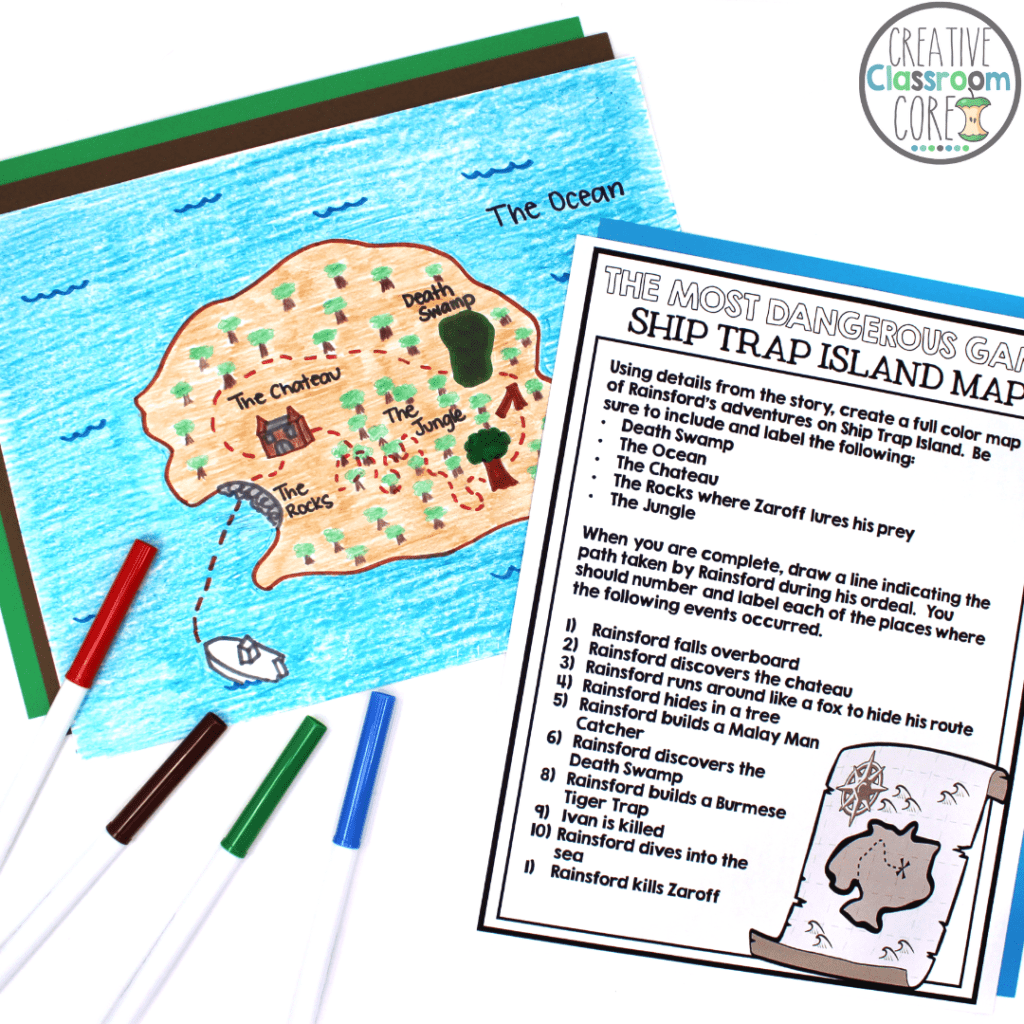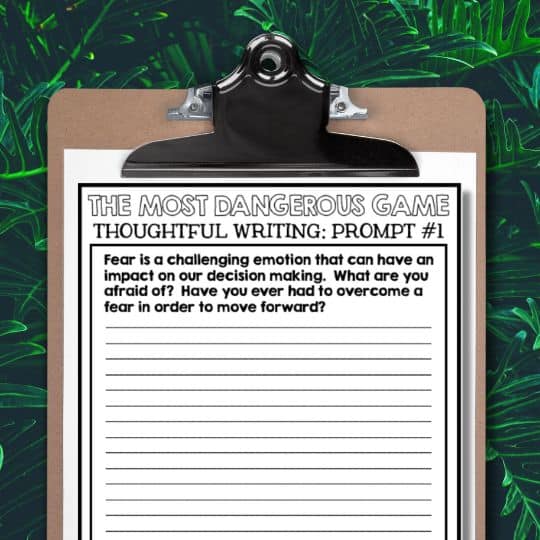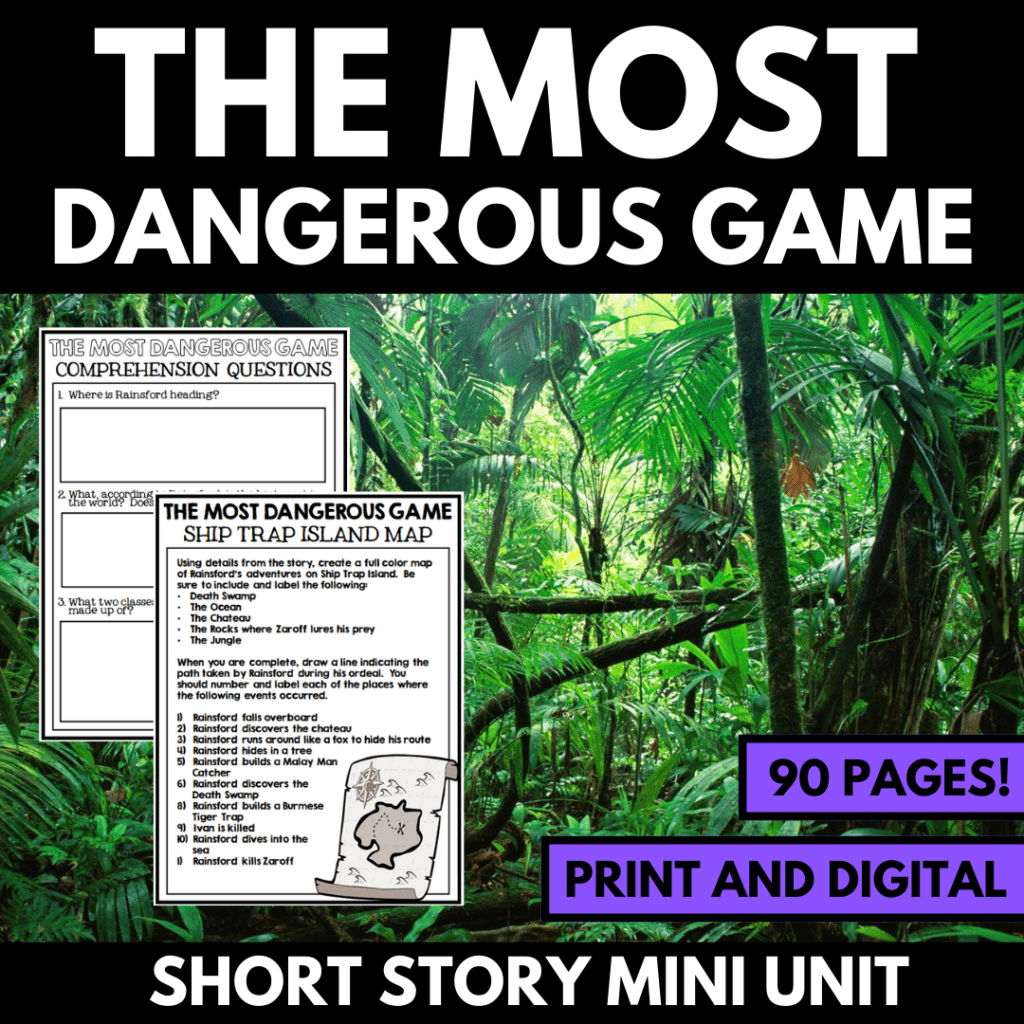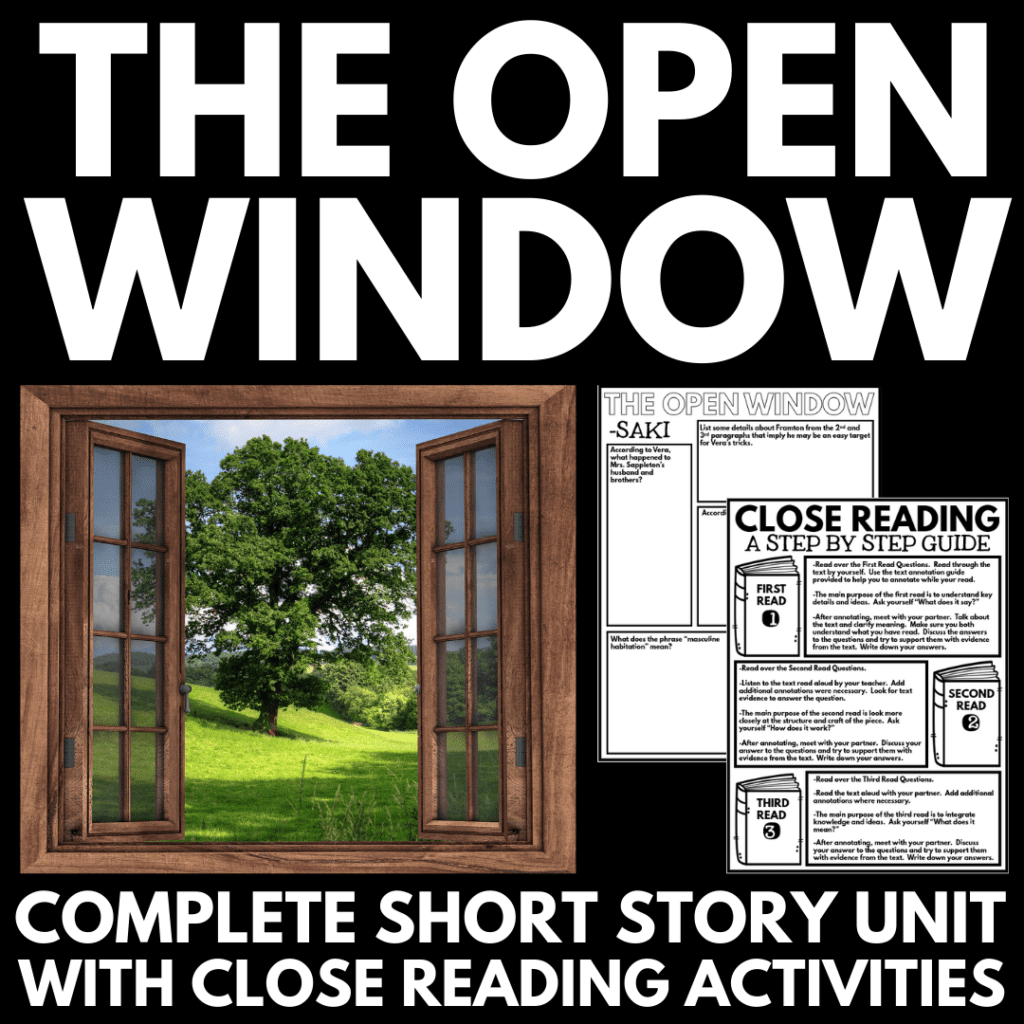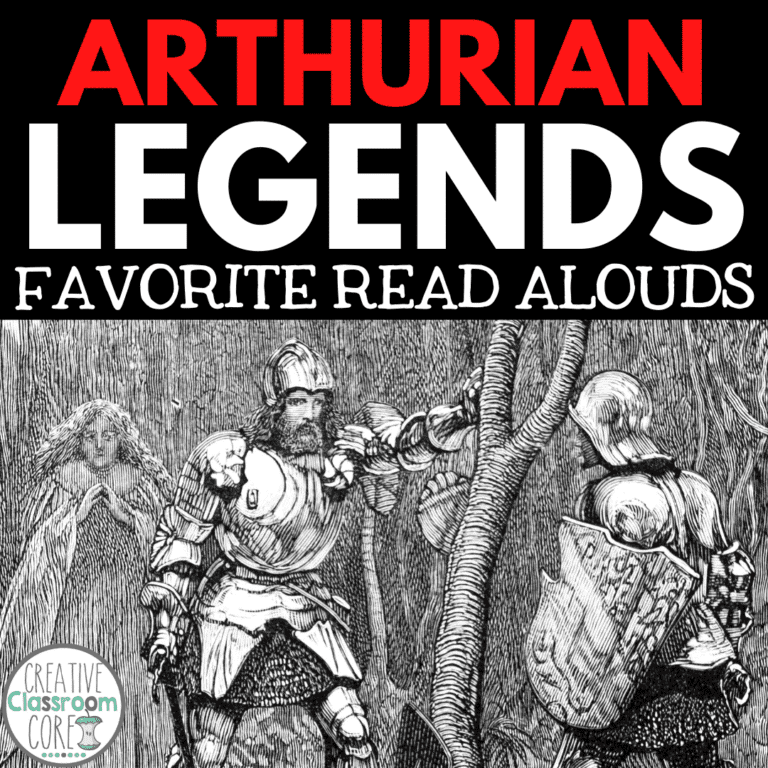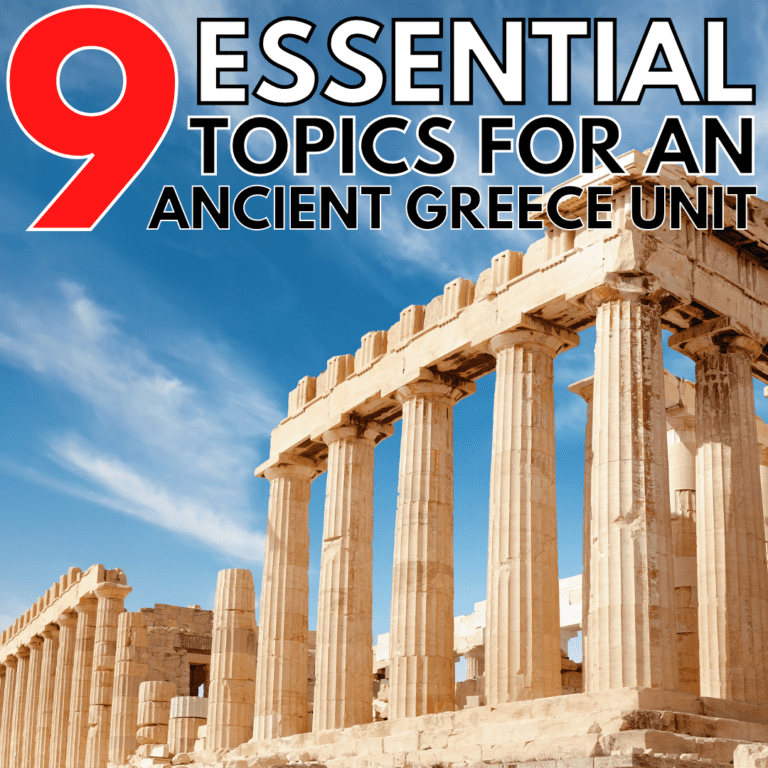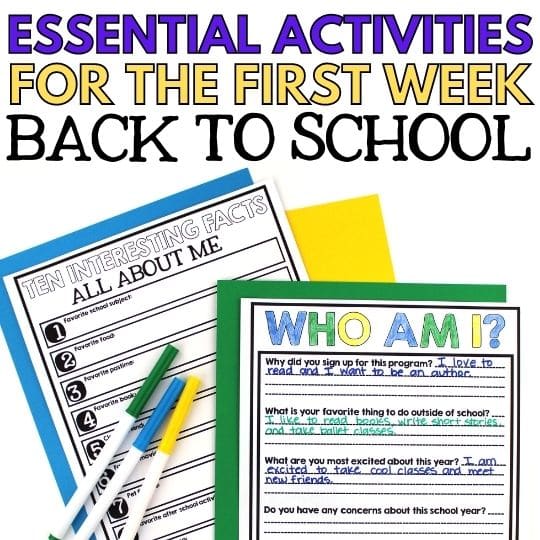The Most Dangerous Game Short story Activities
By MARISSA DESPINS Updated April 04, 2024
If you are “on the hunt” (did you see what I did there?) for a super engaging and culturally iconic short story for your middle school learners, look no further. “The Most Dangerous Game” by Richard Connell is high on my list of all time favorite short stories to teach. The complex and exciting plot, nefarious characters, and exotic island setting draw in even the most reluctant middle school reader.
To grab a complete unit to use along with this creepy short story, click on the image or button below!
What is “The Most Dangerous Game” about?
“The Most Dangerous Game” follows the adventures of a big-game hunter who washes up on the shores of a remote Caribbean island after following overboard in a storm. While on the island, he soon discovers that he is no longer the hunter but the hunted, as he is stalked by an aristocrat with a love of hunting humans.
The suspense-filled story of “The Most Dangerous Game” was loosely inspired by the big-game hunting safaris that took place in Africa and South America in the 1920s. These were particularly popular among wealthy Americans.
How can I use “The Most Dangerous Game” short story in my classroom?
Below I share some of my favorite ways to bring this exciting story to life in your middle school classroom.
Short Story Annotation and Close Reading Activities
Due to its complexity, “The Most Dangerous Game” is a short story that lends itself well to close reading and annotation. According to close reading gurus Fisher and Frey, Close Reading is “an instructional routine in which students are guided in their understanding of complex text”. Basically, Close Reading is an instructional approach that integrates several reading strategies, where students add knowledge gained from text to their schema. Doing so builds habits of successful readers, and builds stamina and persistence with complex text.
To begin our study of the story, I pass each student a copy of the story and an annotation guide. While reading, students are encouraged to pause and add annotations. They are encouraged to underline key words, circle sections they don’t understand, and write notes in the margin. I love using different colored pens and sticky notes for this.
When completed, I place students in small groups to discuss their annotations. While discussing, I encourage students to add to their own annotations. As we move on to further analysis of the story, these annotations are really helpful. They can flip back to the story and look over their notes to clarify their understanding.
Looking for more information on Close Reading? Check out this blog post!
Small Group Quote Analysis
After completing their annotation and close reading activities, I place students in small groups to analyze key quotes from the story. Small groups work great for this. This is because they allow students to openly share their thoughts and opinions as they explore the themes and topics of the story. Friendly debate is always encouraged in my middle school ELA classes!
Short Story Analysis Activities
After completing the quote analysis activity, I have students work individually on a variety of vocabulary and comprehension activities. I have students glue their pages into their interactive notebooks when complete. Having everything organized and in one place really comes in handy come test prep time!
For additional short story teaching ideas, check out our favorite short stories for middle school!
Mapping Ship Trap Island
The setting of “The Most Dangerous Game” plays a really integral role in the story and helps move the plot forward. To further explore the setting and key plot points, I have students create illustrated maps of Ship Trap Island. This activity has really been a hit with my middle school learners, as they love having the opportunity to demonstrate their learning through art based activities.
To complete the activity, students must go back to the story and find text evidence to describe key details about the setting. Next, they use that evidence to help them illustrate their own Ship Trap Island maps. On the maps, students are required to pinpoint and write about key events that took place on the island. This is a great way to help students really focus in on key elements of plot and setting.
For additional information on the benefits of incorporating art based activities in your ELA curriculum, check out our guide to arts integration!
The Most Dangerous Game Writing Prompts
At the end of our unit, I have students choose a writing prompt for further analysis. These prompts encourage deep thinking about the story, and ask students to make connections to their own lives. These activities are great practice for essay writing, and are a great opportunity to tie in some additional reading comprehension strategies.
Looking for more information on Reading Comprehension Strategies? Check out this blog post!
Interested In Grabbing the Complete “The Most Dangerous Game” unit?
You can download my COMPLETE “The Most Dangerous Game” Short Story Unit by clicking here or on the image below. It contains all of the resources mentioned in this blog post!
Looking for more Short Story Ideas?
Check out the blog posts below for tips, free resources, and story suggestions!
9 Dystopian Short Stories for Middle School
Favorite Science Fiction Short Stories
Short Stories for Black History Month
Spooky Short Stories for Middle School
On the Hunt for some Free Short Story Activities?
Click here or on the image below to download this FREE Short Story Resource! It contains a full text story, close reading resources and activities, comprehension questions, graphic organizers, and more!
Interested in signing up for my email list?
If you are interested in signing up for my email list, you can do so by clicking on the link below. I periodically send out emails with free resources, teaching tips, and exclusive deals. Signing up will also give you immediate access to some of my best selling Interactive Notebook resources – foldable activities, graphic organizers, and other fun activities.
